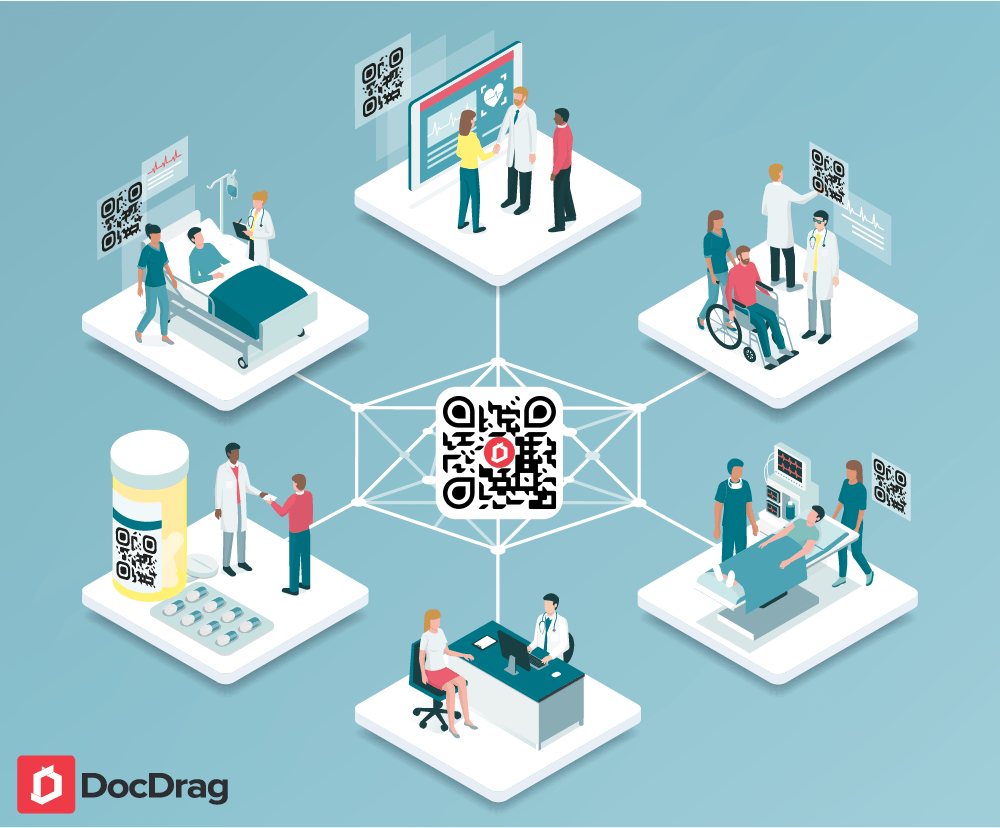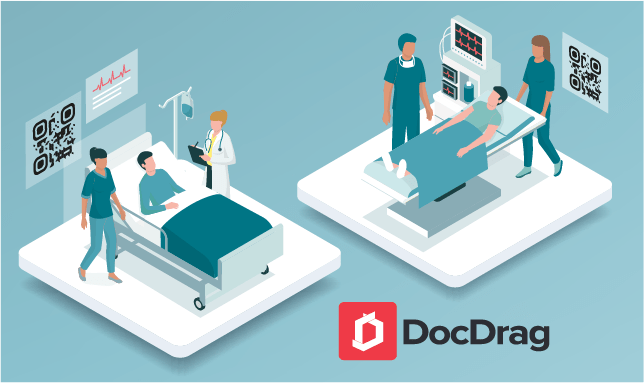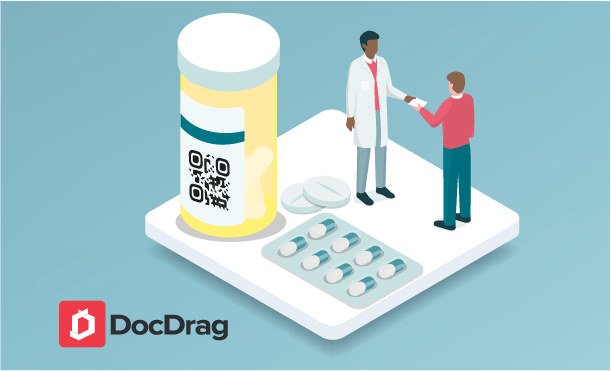
QR codes are fast becoming the go-to method for many organizations and businesses around the world. The reason complex management systems are using QR codes to manage their businesses better is that QR codes can help organize the overwhelming data gathered from customers and, on the other hand, give out information to users where it is due.
Hospitals are some of the most challenging and complex organizations to manage and maintain. There are many variables to consider when running a hospital, such as patients, doctors, staff, drugs, labs, machines, and even patient families. Mismanaging any of these factors in a hospital could lead to catastrophic outcomes, the worse of which could be the loss of a patient’s life.
Technology has always played a crucial role in hospitals, and we’re not just talking about the machines necessary to perform patient diagnosis and surgery. We are talking about tablets that have replaced the old clipboards or the apps that have replaced the outdated pagers. These devices and apps have led to innovative ways to manage hospitals and patients. QR codes are no different.
Using QR codes in the healthcare industry can drastically reduce the paperwork, costs, and ultimately mistakes that could be fatal in a hospital. For example, dynamic QR codes on Patient wristbands or drugs or even medical machines like EKG or MRI could speed up the process of attending to a sick patient and help reduce the workload of the staff.
Since Dynamic QR codes can be edited, traced, and analyzed, it would be possible for hospitals to learn about the needs of their patients and possibly improve their services
where they can. Thus QR codes will be an immense help in saving significant amounts of hospital resources.
Upon patient admittance, hospitals could place a dynamic QR code on the patient’s wristband. These QR codes would contain not only the patient’s personal information but also their medical history, pharmaceutical drugs that they could be taking, and also the procedures they are currently undergoing in the hospital. This QR Code alone could help avoid many mishaps and speed up patient care.
The QR code will stay with the patient throughout their stay in the hospital all the way to their discharge. So it will also provide the staff with all the financial information, medical prescriptions, and information on what the patient should do at home in order to have a safe recovery.

One of the many great uses of QR Codes in the healthcare industry is Health tracking or tracking a patient’s health, sometimes remotely. This use of the Dynamic QR code could help healthcare providers keep an eye on a patient that for any reason, is not allowed to leave the house. An unfortunate great example is Coronavirus. Any patient who contracted the virus must self-isolate at home if possible. In this situation, QR Codes can track the health status of these patients and alert the doctors should the patient need them.
In countries like China, Taiwan, and Myanmar, QR codes are used to track patients’ health inside and outside hospitals. For example, color-coded QR codes in china for coronavirus patients and courses on nursing and administrative leadership strategies in nursing doctorate programs with the focus on the implementation of new technologies in hospitals like QR codes in Taiwan have already helped thousands of patients and helped hospitals and healthcare providers to manage the people in need better.
![]()
One of the biggest problems in the healthcare industry is the lack of communication between patients and healthcare providers. This miscommunication could sometimes lead to distrust or even the worsening of a patient’s health. By placing QR codes on leaflets or posters around the hospital, patients and their families could have access to correct information about their conditions and better understand the procedures they are going to go through to improve their health.

Although many might deny it, health care is a business, and like any other, it needs marketing to survive. Hospitals, healthcare providers, and pharmaceutical companies can use QR codes to promote their brand, success rates, or even patient reviews. These businesses can also use QR codes to improve awareness among patients. For example, information about a specific drug or an approach to a particular medical diagnosis could be turned into a QR code and printed on a leaflet or brochure.
Healthcare services could also use QR codes on advertisements, billboards, or even medical publications. Doing so would generate more visits, profits, and reputation, leading to a more successful business.
If you are running a hospital or a private medical practice, or you’re even a healthcare provider with a few patients, or if you are thinking about starting a non-governmental organization focused on offering medical assistance to the less fortunate, and you are overwhelmed by the number of patients and their needs or the number of staff and their responsibilities, maybe implementing a QR code generating system is the solution to your problems.
You can generate ONE DYNAMIC QR CODE for all or selected items:

We hope this article has helped you make a decision on how you can manage your product documents and links efficiently and cost-effectively. If you have any questions about implementing the QR Code solution in your business, please don’t hesitate to contact us. If you are looking to start managing your company using QR codes, don’t waste any more time and sign up for a free DocDrag trial now.